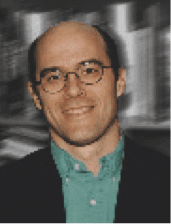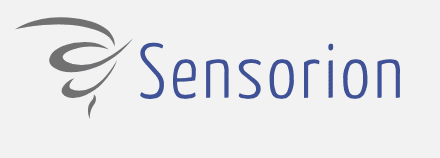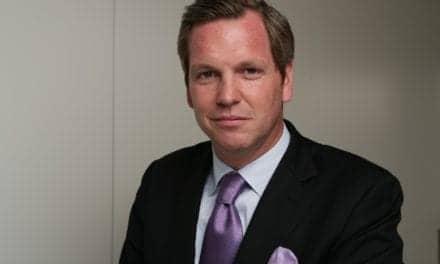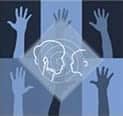By Karl Strom, Editor-in-Chief, The Hearing Review
I’ve cited in a previous editorial the late-1970s BBC series Connections: An Alternate View of Change by the English science historian James Burke (you can watch most of these episodes on YouTube, with the first show located at www.youtube.com/watch?v=OcSxL8GUn-g). The series is a captivating whirlwind tour of technological development and history. The point of Connections is that everything we see and all the knowledge we possess is built brick by brick, discovery by discovery. And often there are some surprising connections between people, events, and innovations. It also reinforces the fact that everything we see (outside of the natural world) was painstakingly created by real, hard-working people dedicated to their work.
I’ve gained a deep appreciation for the people in hearing care who have not only blazed research trails but also mapped and paved our professional roadways. This month, James Jerger, PhD—undoubtably one of the most accomplished audiologists on the planet—writes about three other great audiological researchers—Edmund Prince Fowler, Harvey Fletcher, and R.L. Wegel—who were instrumental in the evolution of our most-used tool in hearing assessment: the audiogram. Interestingly enough, it would appear that these three men did not get it exactly right; as Dr Jerger points out, the audiogram is upside-down. But the story about how it came to be upside-down and how the audiogram evolved into its current form is both interesting and instructive. It shows how the questions about measuring hearing loss relative to its impact on individuals were the key focal point in the audiogram’s development—even if this might have come at the cost of being a slightly more unwieldy professional tool than if it had taken a different evolutionary course.
Also in this edition, Robert Traynor, EdD, writes in our BlogPage (p 12) about the person who has widely become known as the “Father of Audiology”: Raymond Carhart, PhD. Dr Carhart was one of those people whose ideas had such gravity that, some 40 years after his death, his footprints can still be found all over the profession. The “Carhart Method,” even though it now has a negative connotation, was the dominant hearing aid fitting protocol from the 1940s until the “word-list era” that took hold during the 1960s. Carhart’s legacy certainly isn’t hurt by the fact that he had a pretty sharp group of students at Northwestern, including Drs Jerger, James (Jay) Hall III, and David Hawkins, to name only a few. In fact, Carhart served as a subject in Dr Jerger’s dissertation that investigated intensity discrimination in people with sensorineural hearing loss.
The Carhart Method has gotten something of a bad rap in the history of audiology and hearing instrument fitting. Although it did rely on the testing of three hearing aids using monosyllabic word lists in a quiet sound booth, Dr Hawkins pointed out in a 1994 HR article (“A Historical Perspective on Hearing Aid Selection”) that Carhart also advised that patients wear each hearing aid for 24 hours and then rate them on 13 different kinds of sounds in a controlled “listening hour.” Hmmm…sounds a lot like an early verification procedure if you ask me. At any rate, the Carhart Method was more nuanced than simply asking, “How does that sound?”, and then choosing the best of three aids.
Another personal favorite that appears in this edition of HR is a quote and photo of Robert (Bob) Edgell (see “Looking Back,” p 66). Edgell was an early editor/publisher of The Hearing Dealer, the magazine that was renamed Hearing Instruments in 1973 at the urging of one of my mentors, HD/HI Publisher Marjorie D. Skafte. Edgell was a significant figure in the hearing industry during the 1950s and early 1960s, helping to get the Hearing Aid Industries Association (HAIC, later HIA) established as its secretary, and then he went on to head one of the world’s largest publishing companies. I’m often drawn to his editorials for the same reasons many of us have faithfully read Dr Jerger’s monthly editorials in JAAA for 20+ years: they are eloquent, concise, and almost always on target. I didn’t know Bob Edgell, although I did see him a few times when he visited Harcourt Brace and Jovanovich (HBJ) Publishing in Duluth, Minn. He was HBJ’s president (HBJ owned HI), and later his name was on my checks at Edgell Communications; he was also a close friend of another mentor, Lars Fladmark, who founded The Hearing Review and had been HBJ’s executive vice president.
Many have observed that the hearing industry is unique because of its people and their mission in helping people; once it gets into your blood, it’s hard to shake it. A dozen years after he’d left the industry to become a prominent figure in publishing, Edgell wrote a 5-page article in the April 1973 HI detailing his trip to OtoCongress 1973 in Copenhagen where he’d been a guest of honor. I think it’s telling that he ended the article with: “After passing through customs with a tear in our eye and a lump in our throats, we said farewell…”





